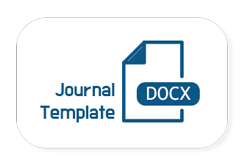Development of problem-based learning worksheets on sequences and series to facilitate students' mathematical creative thinking skills
DOI:
https://doi.org/10.30606/absis.v7i1.2744Keywords:
Abstract
The ability to think creatively in mathematics is a crucial aspect of learning, yet evidence shows that students' creative mathematical thinking skills, particularly in the topic of Sequences and Series, remain low. One solution to address this issue is through the use of Problem-Based Learning (PBL)-based Student Worksheets. This research aims to develop a valid and practical Student Worksheet. The study follows the 4D development model, consisting of the stages: define, design, develop, and disseminate. The instruments used for data collection were validation sheets and practicality questionnaires. Analysis of the validation sheet data showed that the Student Worksheet was categorized as highly valid, with an average percentage of 93.73%. Similarly, the practicality questionnaire analysis indicated that the Student Worksheet was rated as practical, with an average percentage of 83.77%. Therefore, the developed Student Worksheet meets the criteria of validity and practicality and can be used effectively in learning activities. The implication of this research is that it allows students to independently build knowledge in mathematics, facilitating their creative mathematical thinking skills.
Downloads
References
Afriansyah, E. A. (2016). Enhancing mathematical problem posing via realistic approach. International Seminar on Mathematics, Science, and Computer Science Education MSCEIS.
Akdon, & Riduwan. (2015). Rumus dan data dalam analisis statistika. Alfabeta.
Arnyana, I. B. P. (2018). Pembelajaran sains 4.0. Prosiding Seminar Nasional MIPA.
Arsyad, A. (2006). Media pembelajaran. PT Raja Grafindo.
Arywiantari, D., Agung, A. A. G., & Tastra, I. D. K. (2015). Pengembangan multimedia interaktif model 4D pada pembelajaran IPA di SMP Negeri 3 Singaraja. Jurnal Teknologi Pendidikan, 3(1), 1–12.
Asyhari, A., Diani, R., Tarbiyah, F., Keguruan, D., Raden, U., & Lampung, I. (2017). Pembelajaran fisika berbasis web enhanced course: Mengembangkan web-logs pembelajaran fisika dasar I. Jurnal Inovasi Teknologi Pendidikan, 4(1), 13–25.
Azmi, B. M., Irzani, I., & Khusnial, N. L. (2014). Efektivitas strategi problem-based learning (PBL) terhadap kemampuan berfikir kreatif peserta didik. Beta: Jurnal Tadris Matematika, 7(2), 108–119. Retrieved from https://jurnalbeta.ac.id/index.php/betaJTM/article/view/53
Damayanti, R., & Afriansyah, E. A. (2018). Perbandingan kemampuan representasi matematis siswa antara contextual teaching and learning dan problem-based learning. JIPM (Jurnal Ilmiah Pendidikan Matematika, 7(1), 30. https://doi.org/10.25273/jipm.v7i1.3078
Dharmono. (2018). Etnobotani. Universitas Lambung Mangkurat Press.
Happy, N., & Widjajanti, D. B. (2014). Keefektifan PBL ditinjau dari kemampuan berpikir kritis dan kreatif matematis, serta self-esteem siswa SMP. Jurnal Riset Pendidikan Matematika, 1(1).
Lestari, Y. P. (2018). Penerapan PBL (Problem Based Learning) Berbantuan Media Papan Catur untuk Meningkatkan Hasil Belajar Matematika Kelas 4 SD Negeri Sugihan 01. Doctoral dissertation. Program Studi Pendidikan Guru Sekolah Dasar FKIP-UKSW.
Rahmawati. (2017). Hasil TIMMS 2015, Trend in International Mathematics and Science Study: Diagnosa hasil untuk perbaikan mutu dan peningkatan capaian. Puspendik Kemendikbud.
Ramdani, I. (2014). Pengembangan bahan ajar dengan pendekatan pendidikan matematika realistik Indonesia (PMRI) untuk memfasilitasi pencapaian literasi matematika siswa kelas VII. (S1 thesis), UNY.
Riefani, M. K. (2019). Validitas dan kepraktisan panduan lapangan “Keragaman Burung” di kawasan pantai Desa Sungai Bakau. Jurnal Vidya Karya, 34(2), 193–204.
Septiahani, A., Zanthy, L., & Siliwangi, P. (2020). Analisis kesalahan siswa SMK dalam menyelesaikan soal materi barisan dan deret. Mosharafa: Jurnal Pendidikan Matematika, 9(2). http://journal.institutpendidikan.ac.id/index.php/mosharafa
Silaban, A. M., Simbolon, K., & Lumbantoruan, J. H. (2022). Kesulitan siswa dalam memecahkan masalah barisan dan deret aritmatika. Brillo Journal, 1(2), 95–101. https://doi.org/10.56773/bj.v1i2.14
Siviani, R., Zubainur, C. M., & Subianto, M. (2018). Kemampuan berpikir kreatif siswa SMP melalui model problem-based learning. Jurnal Didaktik Matematika, 5(1), 27–39. https://doi.org/10.24815/jdm.v5i1.10125
Sugiyono. (2009). Metode penelitian kuantitatif kualitatif dan R&D. Alfabeta.
Sumarmo, U. (2013). Kumpulan makalah berpikir dan disposisi matematika serta pembelajarannya.
Sutrimo. (2019). Pengembangan lembar kerja siswa (LKS) dengan pendekatan inquiry dan berbasis budaya Jambi untuk meningkatkan kemampuan berpikir kreatif matematis. Thesis. Universitas Jambi.
Suyanto, & Jihad, A. (2013). Menjadi guru profesional: Strategi meningkatkan kualifikasi dan kualitas guru di era global. Esensi Erlangga Group.
Tinja, Y., & Towaf, S. M. (n.d.). Pengembangan bahan ajar tematik berbasis kearifan lokal sebagai upaya melestarikan nilai budaya pada siswa sekolah dasar. http://journal.um.ac.id/index.php/jptpp/
Yulianti, D., Marfu’ah, S., & Yulianto, A. (2015). Development of physics student worksheet (SWS) to build science process skill valued conservation. Jurnal Pendidikan Fisika Indonesia, 11(2), 126–133. https://doi.org/10.15294/jpfi.
Downloads
Published
How to Cite
Issue
Section
License
Copyright (c) 2024 Ariya Permata, Titi Solfitri, Rini Dian Anggraini

This work is licensed under a Creative Commons Attribution-NonCommercial 4.0 International License.








